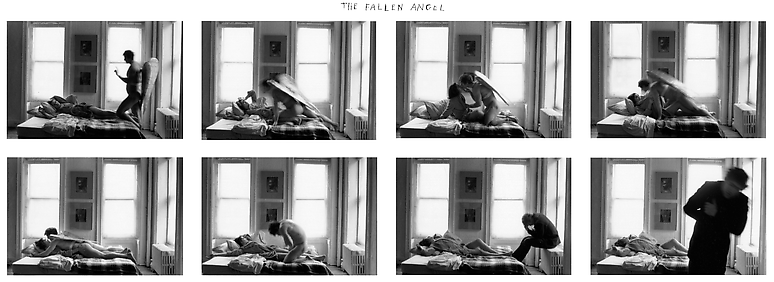Photography - A Theoretical Introduction
- Leah Gordon
- Nov 21, 2020
- 3 min read
Updated: Jan 14, 2021
Artists I found interesting & intriguing from the presentation:
Man Ray - solarisation portraits
Ray was an American visual artist who was a significant contributor to the Dada and Surrealist movements. Ray experimented a lot with the darkroom process, as seen below in his images created through the technique of solarisation, which he pioneered, which he achieved through momentarily flickering his studio lights, forming the distinctive inverse of tones around in his subjects. I really love the outcome of this technique and its definitely something that I would like to try in the darkroom as it creates very graphic and eerie outcomes - things that I like to try and create in my own work.
Duane Michals - is widely known for his work with series, multiple exposures and text. I was particularly drawn to the narrative nature of his work, especially through his series and the very successful use of black and white photography which creates often very dark and eerie atmosphere to his works.
Nan Goldin - The Ballad of Sexual Dependency 1981
Comprising almost 700 snapshot-like portraits sequenced against an evocative music soundtrack, Nan Goldin’s The Ballad of Sexual Dependency is a deeply personal narrative, formed out of the artist’s own experiences around Boston, New York, Berlin, and elsewhere in the late 1970s, 1980s, and beyond. The photos explore ecstasy and pain through sex and drug use, they revel at dance clubs and bond with their children at home; and they suffer from domestic violence and the ravages of AIDS. (https://www.moma.org/calendar/exhibitions/1651?)
I was very drawn to how raw and emotional these images are, enhanced by the dark colour palette of the images and dim, shadowy lighting. I think it was very brave and bold of Goldin to record and share such personal work, with her stating herself that taking the images made her properly realise and open her eyes to the situation of domestic abuse that she was stuck in at the time. Looking at these images really made me realise how powerful and therapeutic photography can be, and how, without sounding too cliche, can really change people's lives and very truthfully document otherwise untold stories.
Francesca Woodman - was and American photographer best known for her black and white pictures featuring either herself or female models. Her pictures are not self-portraits in the traditional sense, she is often either nude or semi-nude and usually seen half hidden or obscured – sometimes by furniture, sometimes by slow exposures that blur her figure into a ghostly presence. I find her work incredibly interesting, especially the way that she explored the female figure through movement, creating really dynamic representations of the body through blurred figures. I'm also really drawn to the backgrounds and locations she used in her work, often photographing in very dilapidated and rugged locations, which adds real depth and an element of danger to her pieces which I really enjoy as it seems to be making a comment on gender by contrasting the rather feminine and 'innocent' appearance of the dresses she wears in her images with the rawness and rugged surroundings she's in. I've previously experimented with blurring the figure in self-portraits, but like Nan Goldin would like to try photographing in more run down locations.
Edward Weston - Edward Henry Weston was a 20th-century American photographer. He has been called "one of the most innovative and influential American photographers..." I've looked at his work before, but the presentation reminded me of how much I enjoy his work, especially the way in which he explores the female form, making really interesting use of shadows and nature. This presentation also made me realise that I seem to be particularly drawn to black and white photography at the moment, so I think it's something I should definitely be playing around more with.











































































Comments